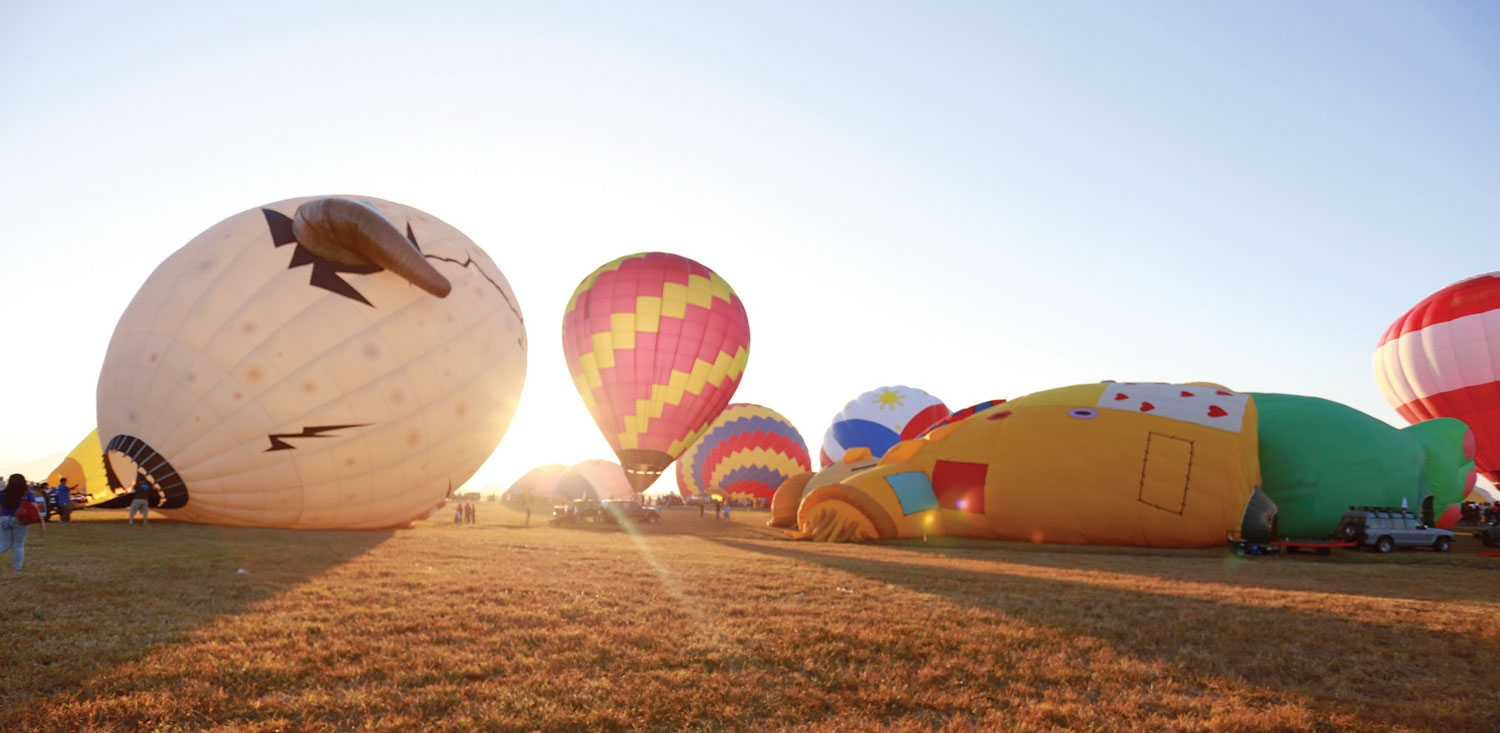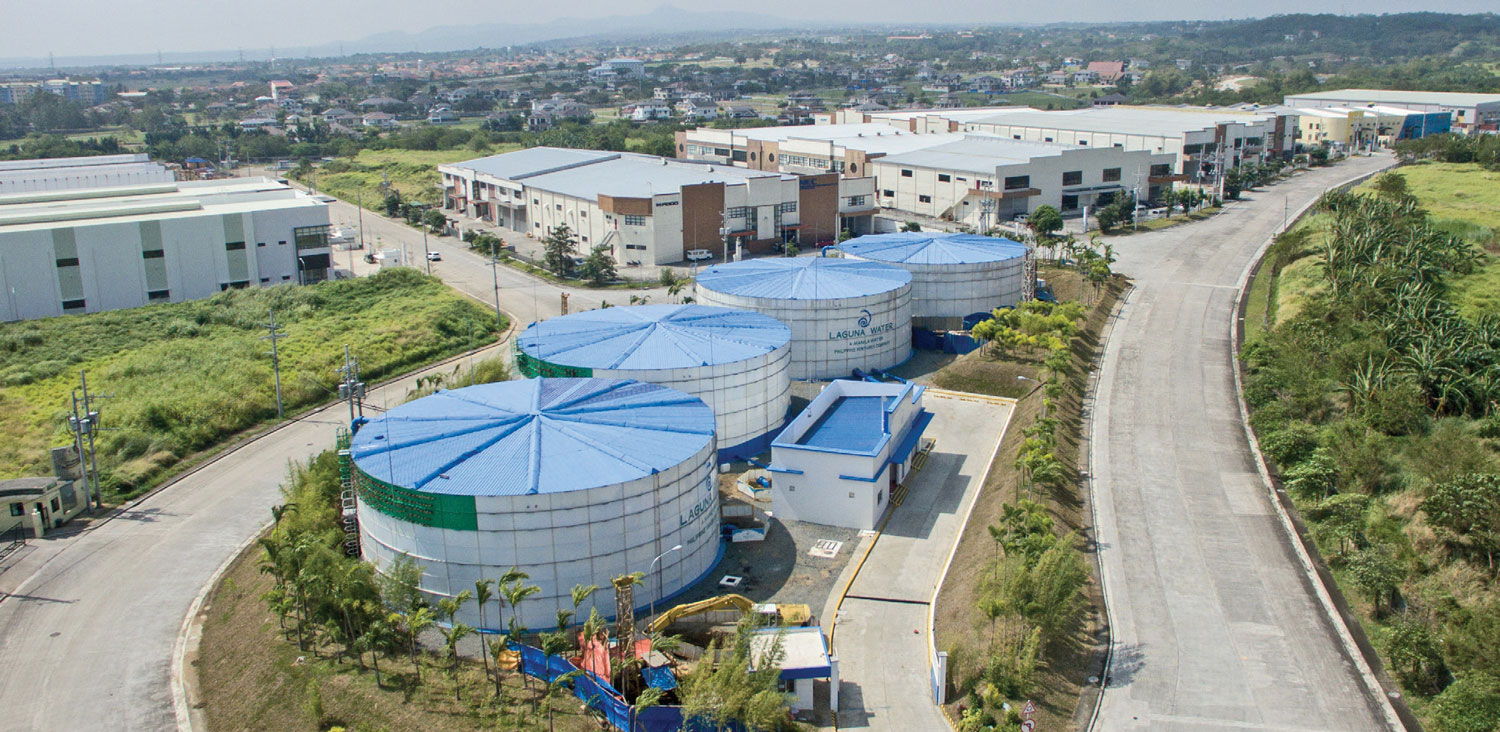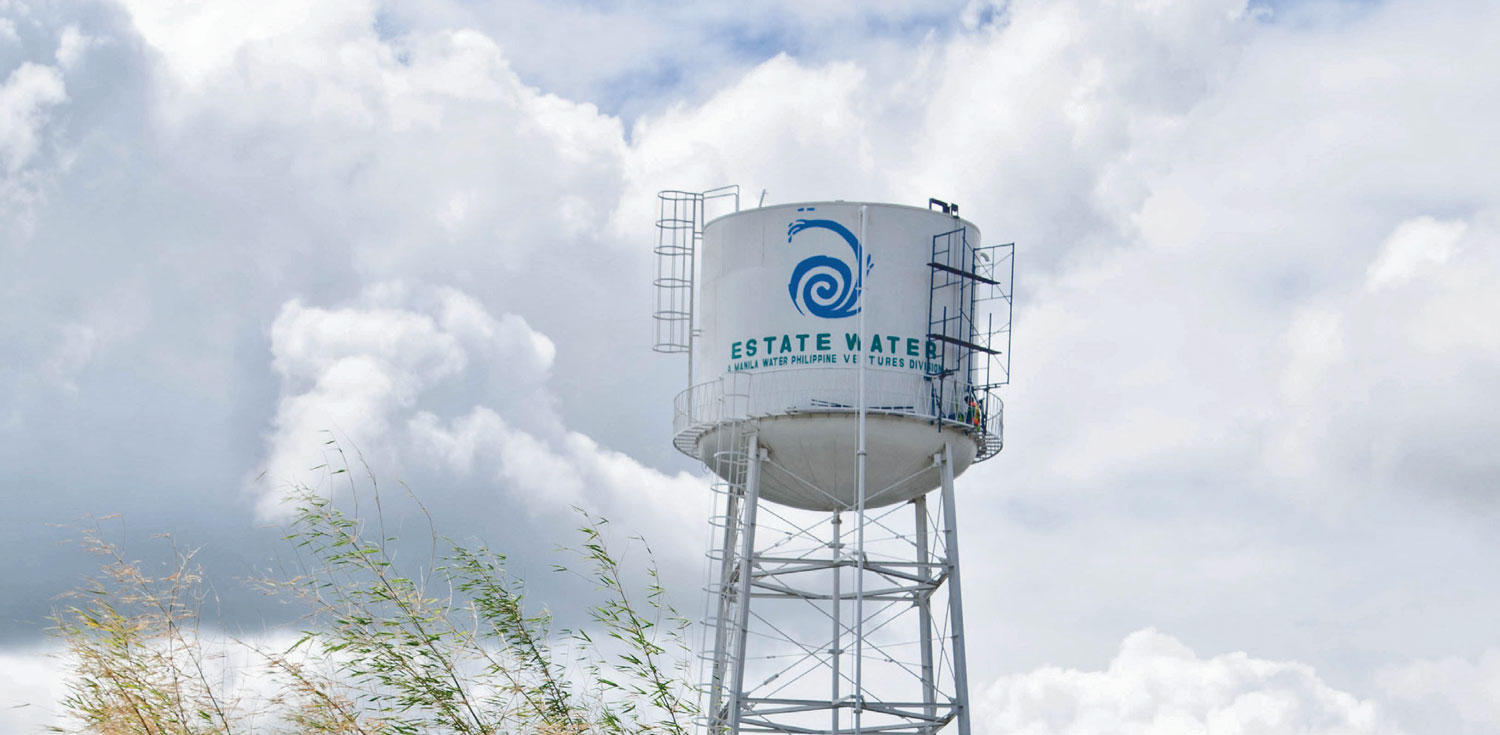Business Review

Billed Connections
Capital Expenditures
Wastewater Treated
BOD Removed
On a consolidated MWPV level, revenues grew by 45 percent to ₱4.8 billion in 2019. A significant contributor to this improvement was the higher revenues of Estate Water coming mostly from its supervision fees for the provision of design and project management services in the development of water and wastewater facilities, as well as similar fees for the provision of water and wastewater services. In addition, portions of the increase in revenues are due to higher average tariff levels in Boracay Water and Laguna Water. Several subsidiaries also saw increases in billed volume during the year, namely Boracay Water and Estate Water, with the re-influx of tourists and the takeover of more property development projects, respectively.
NORTH LUZON
Clark Water
A partnership between MWPV and the Clark Development Corporation (CDC), Clark Water holds a 40-year concession within the 4,400-hectare main zone of the Clark Freeport Zone (CFZ) in the province of Pampanga. The CFZ continues to transform into an airport-driven urban center, housing high-end IT enabled industries, aviation and logistics, tourism and other sectors. Clark Water ensures that it provides these industries, as well as residents and tourists, have access to adequate water supply.
Clark Water has a total of 2,079 billed connections, comprised mostly by industrial and commercial locators. It sustains a 100 percent water service coverage with Non-Revenue Water (NRW) at an efficient level of 7.4 percent in 2019. In terms of wastewater, the company treated 7 million cubic meters (MCM) of wastewater and diverted 878 tons of organic pollution load. As a result, Clark Water was able to reduce emission by more than 5,002 tons of CO2 (eq).
Clark Water’s billed volume grew by two percent to 14.5 MCM, which led to the same percent increase in revenues to ₱464 million in 2019. It spent a total of ₱157 million for its capital expenditures, which were geared towards continuity of water and wastewater services. Meanwhile, Clark Water’s rate rebasing exercise is still ongoing. Once approved, proposed projects to support the company’s commitments to CDC and its customers will be implemented.
Bulacan Water
The Province of Bulacan is home to more than 3 million people and is comprised of three cities and 21 municipalities. Development in the province benefits from its proximity to Metro Manila but water supply remains as a fragmented market. Given this type of market, MWPV undertakes several water distribution contracts across the province.
In 2017, Manila Water partnered with the Obando Water District (OWD) and executed a 25-year Concession Agreement for the rehabilitation and management of the Municipality of Obando’s water supply system and to provide water and sanitation services. Obando Water is a joint venture between Filipinas Water Holdings, Corp. (FWHC) and OWD. FWHC is a consortium between Manila Water and MWPV. In 2019, Obando Water has 9,284 billed connections with billed volume by of 1.8 MCM translating to revenues to ₱75 million. It also invested ₱56 million mostly related to water network projects.
Bulacan MWPV Development Corp. (BMDC) caters to Bulacan’s residential subdivisions. In 2017, the company signed asset purchase agreements with three property developers namely, Asian Land Strategies Corporation, Solar Resources and Borland Development Corporation with a total of 8,095 billed connections as of 2019. The company posted an increase in billed volume by 13 percent to 1.8 MCM and increase in revenues by 48 percent to about ₱41 million.
Calasiao Water
A partnership between Manila Water and the Calasiao Water District, Calasiao Water holds a 25-year Concession Agreement for the development and operation of the water supply system in the Municipality of Calasiao Pangasinan. It is projected to cover 24 barangays with a total population of about 95,000 over the life of the concession. As of 2019, Calasiao Water serves 2,421 billed connection with billed volume of 0.4 MCM and revenues of ₱11 million. The company spent almost ₱14 million in capital expenditures for the improvement and expansion of water services in Calasiao.
SOUTH LUZON
Laguna Water
The Province of Laguna covers six cities and 24 municipalities with an estimated population of more than three million. It continues to transform several of its areas into commercial and industrial centers.

Laguna AAAWater Corporation (LAWC) was acquired in 2009 and is Manila Water’s first public-private partnership outside of the Manila Concession. LAWC, along with the Provincial Government of Laguna (PGL) as its partner, continues to transform communities through the provision of water and wastewater services in its coverage area. The concession originally serves the cities of Biñan, Cabuyao and Sta. Rosa for a period of 25 years until 2035. Consequently, the success of the partnership between LAWC and PGL led to the amendment of the Concession Agreement (CA), specifically expanding the scope of the services to all the rest of the province. The amendment also included the provision of wastewater services and the establishment of an integrated sewage and septage system in the province. Since the amendment of the CA, LAWC has taken over the water distribution of the municipalities of Pagsanjan and some barangays in the municipalities of Calauan, Victoria, Lumban, and Pakil.
LAWC’s revenues grew by 25 percent in 2019 to ₱1,668 million driven by the combined increase in billed volume (four percent) and average tariff (57 percent). NRW slightly increased by 1.2 percentage points to 18 percent mainly driven by old pipes from the newly acquired areas. LAWC will continue to rehabilitate the pre-existing systems to reduce NRW to a more efficient level. The company spent ₱546 million for its capital expenditures, mostly for expansion of water and wastewater networks within the concession area.
The introduction of LAWC’s wastewater services led to the company treating more than two million cubic meters of wastewater. This is equivalent to about 316.8 tons of BOD removed, and avoidance of about 3,719 tons of organic pollution.
VISAYAS-MINDANAO
Boracay Water
Home to more than 35,000 residents, the island of Boracay is known for its talcum-fine beach and crystalline waters. Local economy of the island is driven by the influx of tourists but was hampered in the middle of 2018 when the government closed the island to address environmental issues. MWPV, through its subsidiary, Boracay Island Water Company (BIWC), supported government efforts to rehabilitate the island. Since the reopening of the island in late 2018, tourists have been visiting again reaching two million in 2019.
BIWC is a result of a joint venture between Manila Water and the government through the Tourism Infrastructure and Enterprise Zone Authority (TIEZA) and holds a 25-year concession to serve potable water and sewerage services in the island. The company has recovered after the closure which saw billed volume grow by 23 percent to 4.8 MCM primarily driven by the 116 percent increase in tourist arrivals. Likewise, the company posted a growth in revenues by 49 percent to ₱675 million. The company also reduced its NRW to 9.8 percent in 2019 from 13.8 percent in 2018 and spent ₱376 million in capital expenditures.
BIWC is committed to fulfilling its responsibility to the environment through the provision of wastewater services to its customer. In 2019, the company treated two million cubic meters of wastewater, equivalent to 544 tons of BOD removed and more than 3,200 tons of CO2 (eq) emissions avoided.
Cebu Water
Cebu Water is a 30-year bulk water supply partnership with the Provincial Government of Cebu. It serves about two million people through the provision of 35 MLD of potable water to the Metropolitan Cebu Water District (MCWD). MCWD is the distributor to the province’s large cities, specifically Metro Cebu, Lapu-Lapu, Mandaue and Talisay. Cebu Water’s contract includes the construction of a water diversion structure, a water treatment plant and the laying of 32-kilometer pipeline from the plant in the town of Carmen to MCWD’s water intake. This is the first water treatment facility to draw from surface water in the island which mostly relies on deep wells.
Cebu Water posted a decline in revenues by 5 percent to ₱182 million despite the slight increase in billed volume to about 13 MCM in 2019 from 12.8 MCM in 2018. In order to sustain provision of supply to MCWD, Cebu Water invested ₱101 million for water security.
Zamboanga Water
Zamboanga Water is Manila Water’s first investment in Mindanao and is primarily focused on a 10-year NRW-reduction project in the Zamboanga City. It is in partnership with the Zamboanga Water District, holding the distinction of the first performance-based NRW-reduction project to be implemented in the Philippines.
The project commenced its operations in June 2015 with an objective to reduce a total of 28.7 MCM throughout the life of the project. The project is divided into phases, with the early stages requiring the design and construction of District Metering Areas followed by extensive leakage and repair throughout the distribution network.
In 2019, the company recovered 3.7 MCM, bringing the total recovered volume to 10.5 MCM. This is despite the suspension of leak repair activities on areas affected by the water rationing as the city continues to experience El Niño. Zamboanga Water posted revenues of about ₱163 million, driven by the company’s locked in performance.
Tagum Water
Projected to start its operations in 2020, MWPV’s bulk water supply project in Tagum City, Davao del Norte is 100 percent complete and is already in the commissioning phase.
The project was signed in 2015 and includes the construction of the Tagum Water Treatment Plant with a capacity of 38 MLD. Upon completion of the treatment plant, it will supply Tagum City Water District with 26 MLD of treated water on its first three years of operations. On its fourth to sixth year, the company will supply 32 MLD and will increase thereafter for the remainder of the 15-year delivery period to 38 MLD.

Estate Water
Estate Water is MWPV’s operating division which specializes in business-to-business partnerships, leveraging on the company’s operations and maintenance of water and wastewater systems expertise. It caters to the property development segment with its value generated from reducing its partners’ development costs and providing best-in class service levels.
Estate Water started in 2016 providing property developers appropriate master-planned water extraction and wastewater facilities, efficient management of facilities and networks, regulatory and environmentally compliant operations and high-quality customer service.
In 2019, Estate Water posted revenues of ₱1,350 million driven by an increase in billed volume to 10.5 MCM, as well as the significant increase in supervision fees to more than ₱800 million. It also spent ₱1,235 million in capital expenditures for the development of water and wastewater infrastructures.
Manila Water’s commitment to the environment is also present in Estate Water’s operations. In 2019, it treated 8.15 MCM of wastewater which led to the removal of about 5,432 tons of BOD and avoidance of more than 32,029 tons of CO2 (eq).